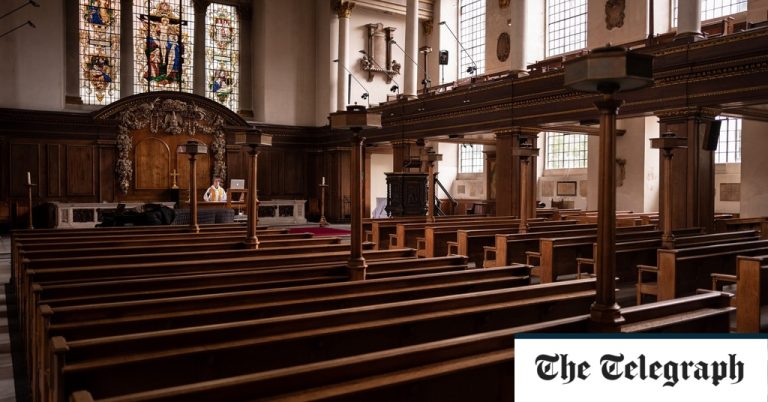The National Churches Trust reports that more than 2,000 churches have closed in the last decade, many were abandoned entirely. Friends of Friendless Churches is a charity which attempts to save and repair some churches which are no longer in use in England and Wales. They have in their care more than sixty ancient, beautiful, and empty churches, and they rely entirely on public donations to carry out their sad work.
In his much-loved 1954 poem, Church Going, Philip Larkin wondered what would become of these churches once their original purpose was forgotten. Perhaps they would become places of local superstition, he suggested, roofless and friendless, and would be “rented free to the rain and the sheep.”
Or leave free rent to drag queens? It was a clever project dreamed up by St James’s Church in Piccadilly, which earlier this year hosted a drag queen event called Preach! Audiences were promised “lip syncs galore… hilarious comedy routines, as well as aisle dancing, singing, cocktails and mocktails – all under the roof of this historic Grade I listed church”. Larkin didn’t see that coming, did he?
We are approaching one of the few days of the year when unregistered Anglicans still show up at church. Last year, 1.6 million people attended a Christmas service at an Anglican church in England, just over 2% of the population, up from 4% a decade ago. Attendance the rest of the year is less than half this figure.
At the current rate of decline, the The Church of England should disappear circa 2060. The Church is well aware of this, and a faction within it sees aggressive modernization as its only hope for survival. Hence all the drag queens.
But they may well have it precisely backwards. American sociologist Dean Kelley first observed in his 1972 book Why Conservative Churches Grow that not only were stricter Christian denominations better able to resist the broader decline in Christian belief, but that many between them were in fact flourishing.
This is true in contemporary Britain, where – as the Anglican vicar and statistician David Goodhew put it – churches “which prune the faith to fit the culture tend to shrink, and those which offer a faith “full-fledged”, vividly supernatural, tend to diminish. tended to grow.
This may seem counterintuitive: shouldn’t the most flexible and open-minded churches be the most attractive to people raised in such a culture?
Dean Kelley’s explanation is that conservative and liberal churches actually serve very different functions. The former focus on spiritual relief – community identity, tradition, ritual and purpose – while the latter focus more on political causes. And given that political itch can so easily be scratched within secular institutions, these liberal churches tend to lose congregants over the years (why go to a drag show at a church, when you could go to a drag show drag racing literally anywhere else?).
More conservative faiths are also winning the cradle battle. In America – where accurate fertility data is more readily available – Catholics who attend old-style Latin Mass have birth rates not only twice the national average, but also significantly higher than those of Catholics who only attend services in English. When I sent these figures to an American Catholic friend whose church favors the Latin Mass, she pointed out that most families in her congregation have seven or more children.
Which suggests that the future Larkin envisions, one of roofless, friendless churches, may never materialize. Christianity is not dying, rather it is becoming more conservative. The faithful don’t want politics preached to them, and they certainly don’t want drag queens. What they want is the full version of the faith.


